Bamboo Scroll Dataset
| 19 Feb 2019 | Code published according to the manuscript published in |
|---|---|
| 20 Apr 2018 | First release of the bamboo scroll X-ray CT dataset has been made publicly available. The dataset consists of two CT scans (clean/dirty). In future, we will extend this database and furthermore provide our algorithms to create a baseline. |
Cinematic Rendering of X-ray Scanned Bamboo Scroll
This video of the X-ray scanned and reconstructed soiled bamboo scroll has been created by using the Cinematic Rendering software from Siemens Healthineers.
This dataset was created for the DAS 2018 Workshop. If using this dataset results in any publications or reports, we kindly ask you to cite the following publication:
Stromer D., Christlein V., Zippert P., Helmecke E., Hausotte T., Huang X. and Maier A. "Non-Destructive Digitization of Soiled Historical Chinese Bamboo Scrolls". In Proceedings of the 13th International Conference on Document Analysis and Recognition, IEEE, 2018.
 dataset_bamboo.zip
dataset_bamboo.zip
For questions or comments please feel free to contact ![]() Daniel Stromer.
Daniel Stromer.
This is the code to perform virtual cleaning and virtual unwrapping of a X-ray CT scanned scroll. The input is a 3-D volume and a 2-D template, extracted from the volume. The code is written to work on the provided data. If you want to use your own data or change the filenames, please adapt the code at the highlighted positions.
Please cite:
Download:
3D X-ray scanned bamboo scroll before and after virtual cleaning
The left part of the animation shows the X-ray scanned bamboo scroll covered and filled with soil. One can see, that the document is heavily contaminated. The right part of the animation shows exactly the same scan scanned scroll, but virtually cleaned by the proposed algorithm (t.b.a. [Scientific Reports 9]). With this version of the volume, the location of single slips are visible and a conservator can reconstruct the original positions without the need of drawing location maps or sketches. Furthermore, it is now possible to virtually unwrap the document to read the writings. (Note: Normally, the volume is in grey scale, the colors are just
Data and scan description
The bamboo scroll was bought in Beijing and consists of 32 bamboo slips (left/right image). One slip has a size of 1.1 mm x 15.7 mm x 0.3 mm (W x H x L). All slips are connected by strings. Each slip has carvings which denote drawings or Chinese symbols. The outermost slips have drawings and inverted writings, which means that the symbols' surroundings are carved into the wood. The drawings and symbols of the inner slips are directly carved into the bamboo. For all 3D X-ray scans, the scroll was wrapped up.
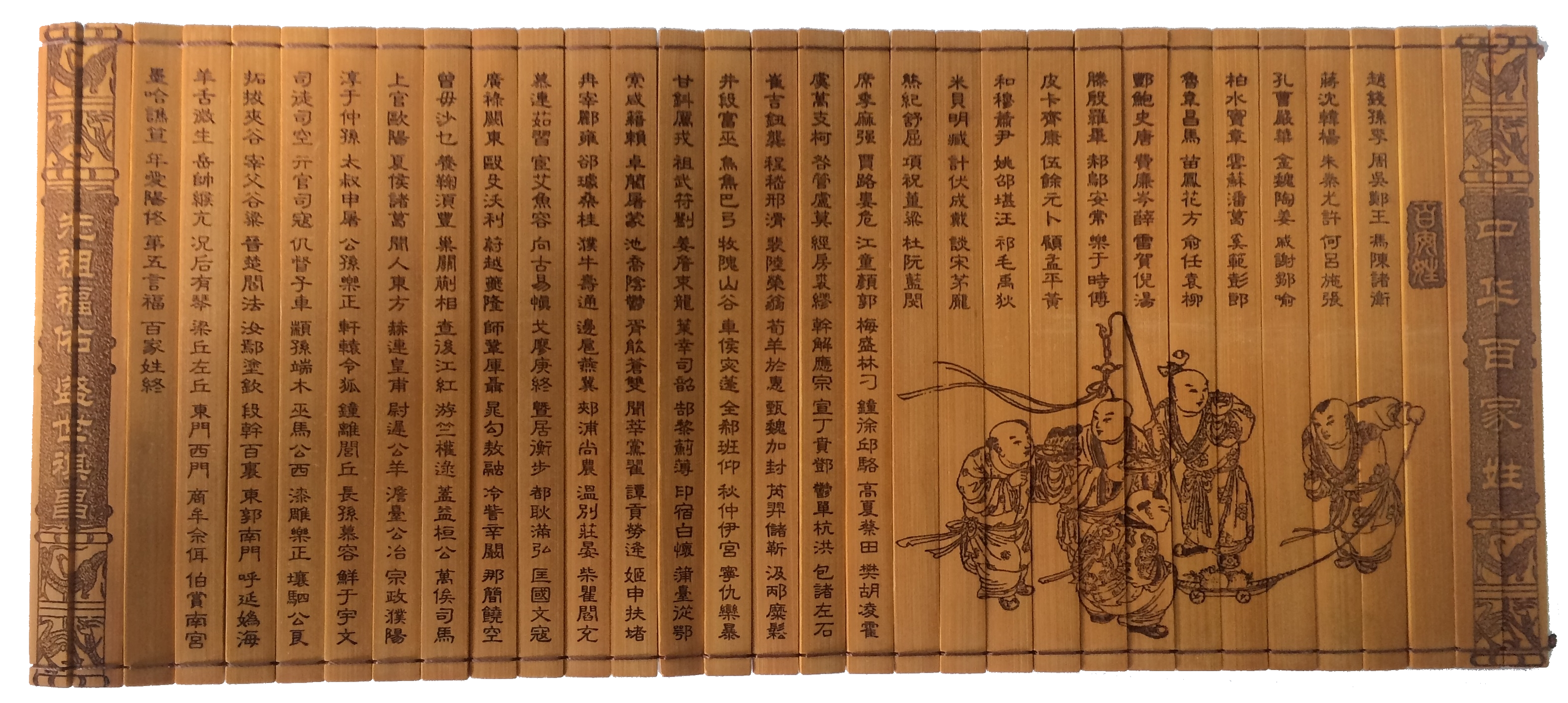
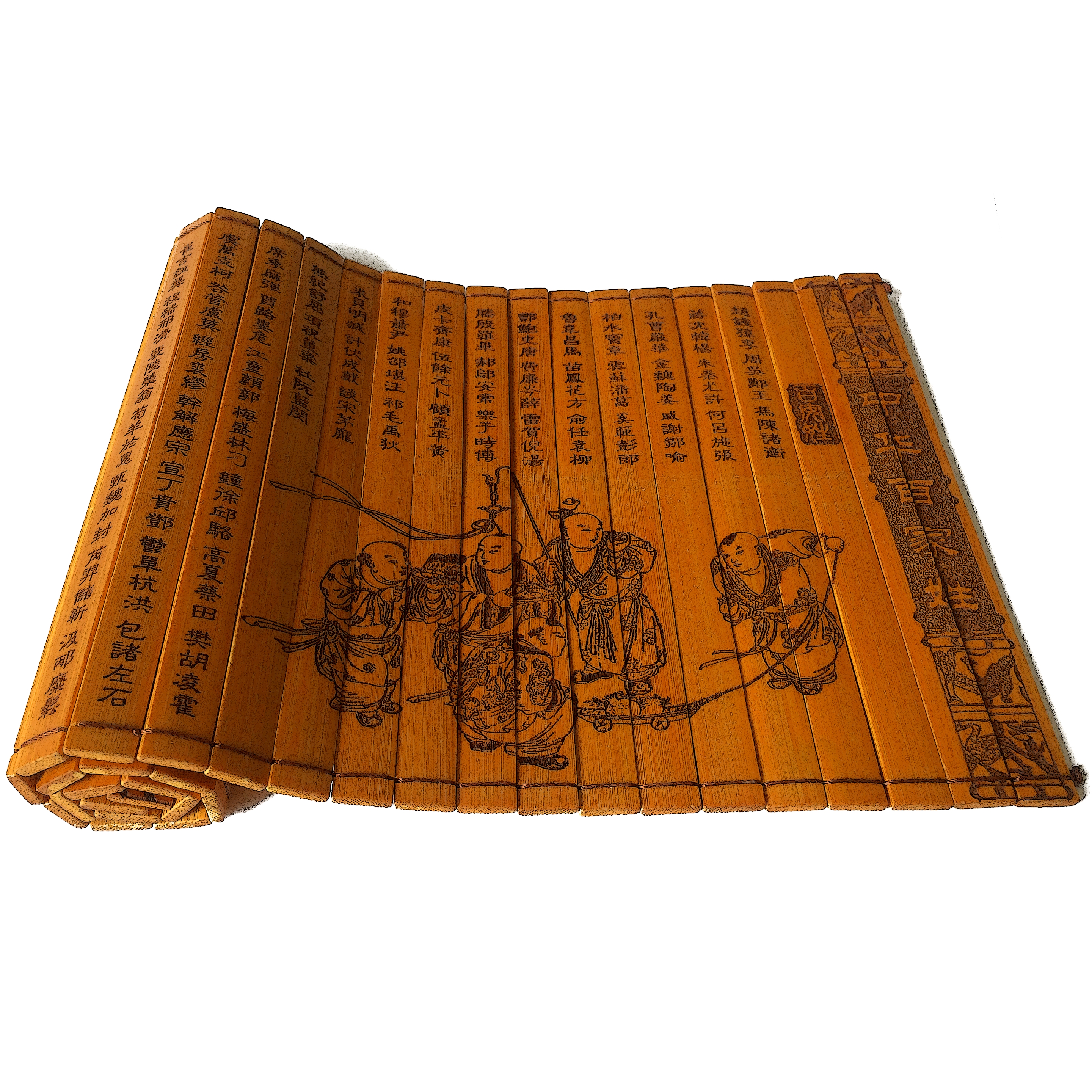
Towards more realism. As the scrolls are mostly found underneath the earth, they are heavily contaminated by soil. This makes it a difficult and time consuming task for conservators to clean, unrwap and digitize their contents. To create this more realistic scenario, we made a first scan of the wrapped up clean, uncontaminated scroll. Afterwards, we heavily contaminated the wrapped up scroll (left image) with potting soil (including mineral particles, e.g., Ca, Mg, ...) and put it in a plastic bag (right image).
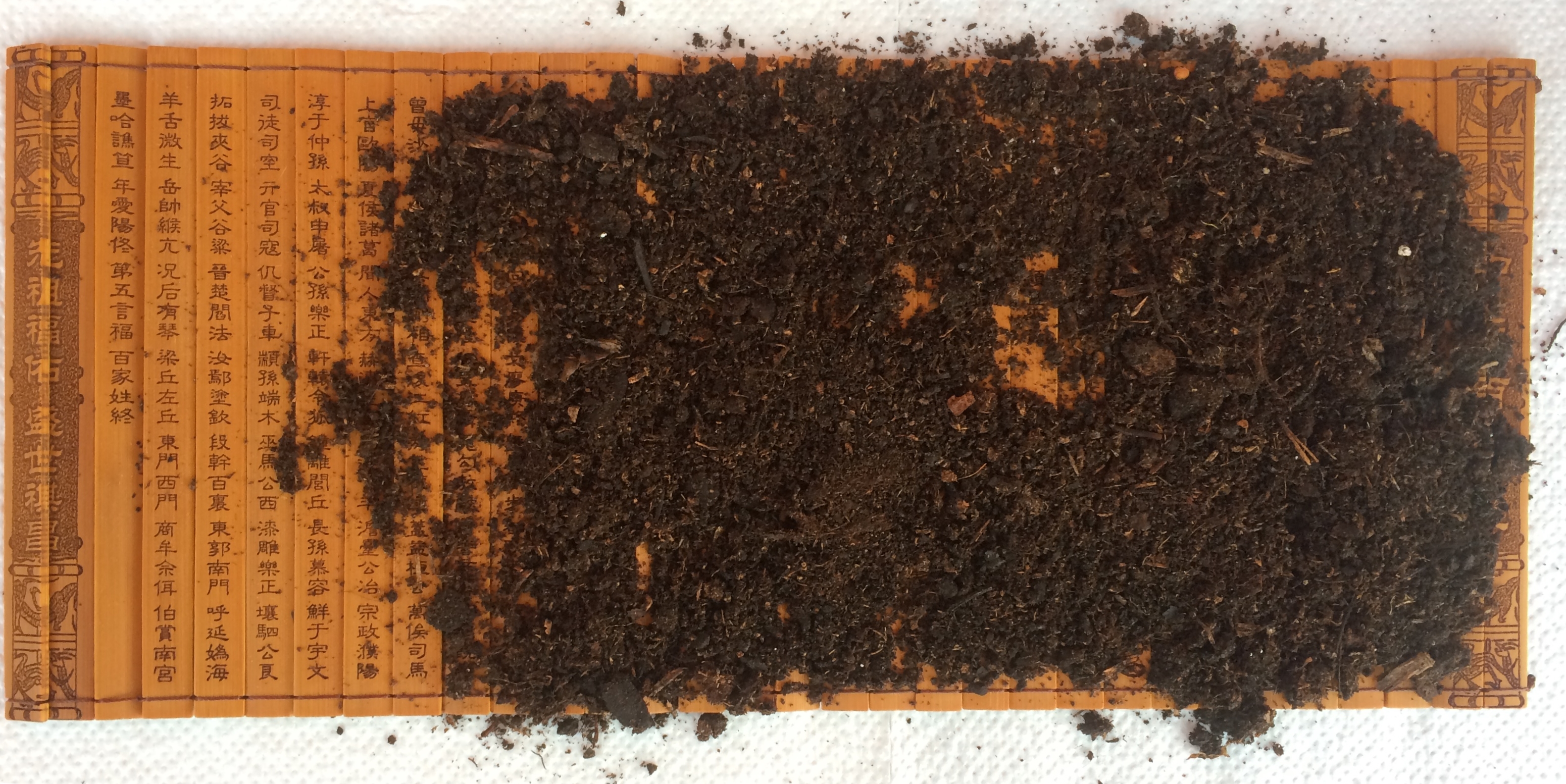
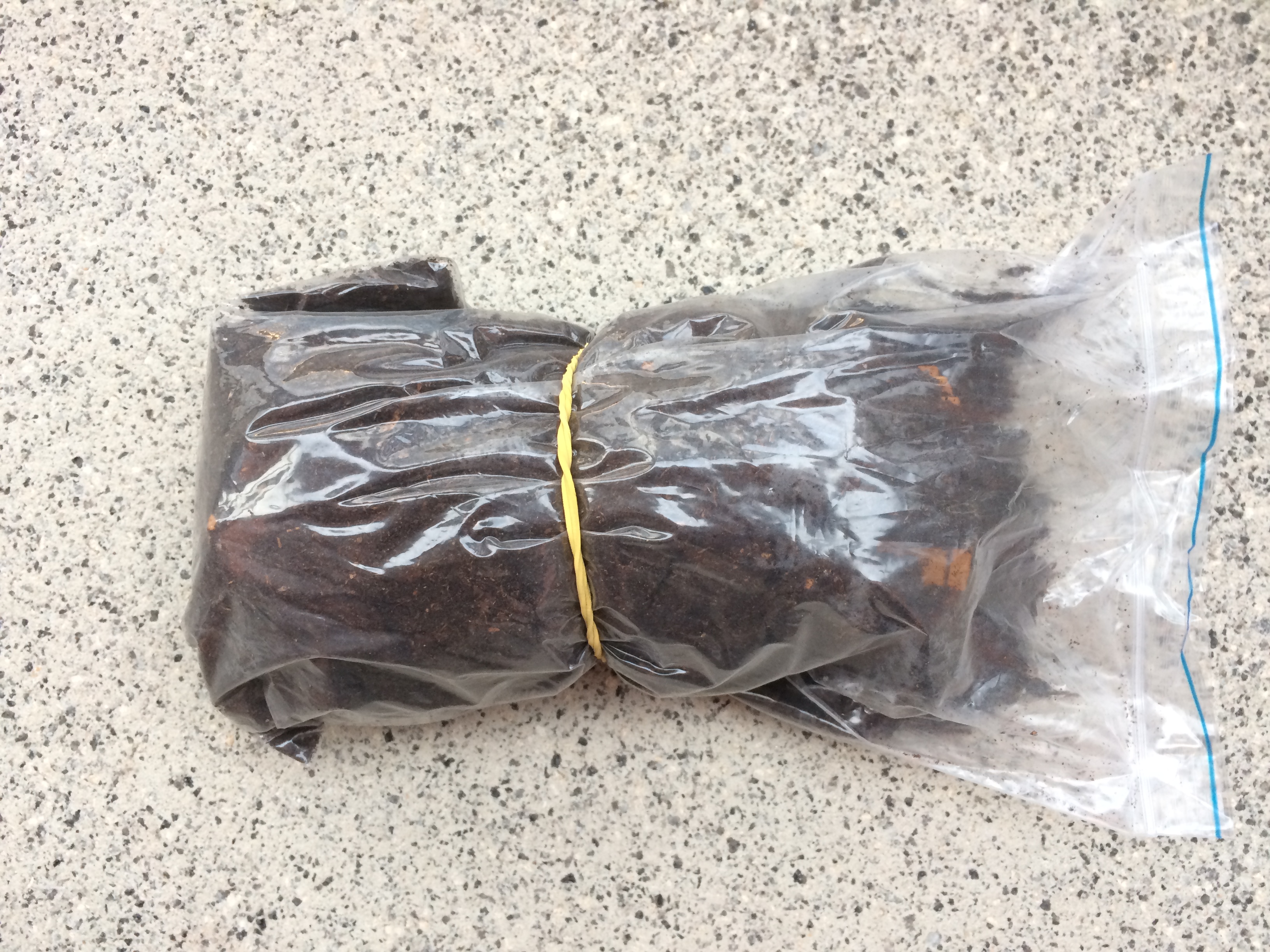
3-D X-ray Computed Tomography (CT) Scans. For allowing a non-invasive digitization, we performed two 3-D X-ray CT scans of the scroll. First, the clean scroll was scanned to proof that a digitization is possible. Next, the contimated scroll in the plastic bag was measured. The scan parameters were the same for both scans and some parameters are included within the respective zip files (Scan_and_volume_info.txt). The scroll was placed upright in the scanner (longest dimension along rotation axis) such that the cylindrical form of the scroll guaranteed an equal X-ray beam length through the object reducing artifacts. Both, wood and earth consist of cellulose, making it difficult to identify scanned carving filled with earth. However, the mass attenuation coefficient of a specific material depends on it's X-ray attenuation coefficient and the mass density. The higher the X-ray tube energies, the more the mass attenuation coefficient depends on the density of a material and the density of bamboo is much higher than the density of the celleulose particles in the earth. Therefore, we configured a tube voltage of 130 kV to allow differentiation between earth and wood, such that we can read the symbols even if they are filled with earth.
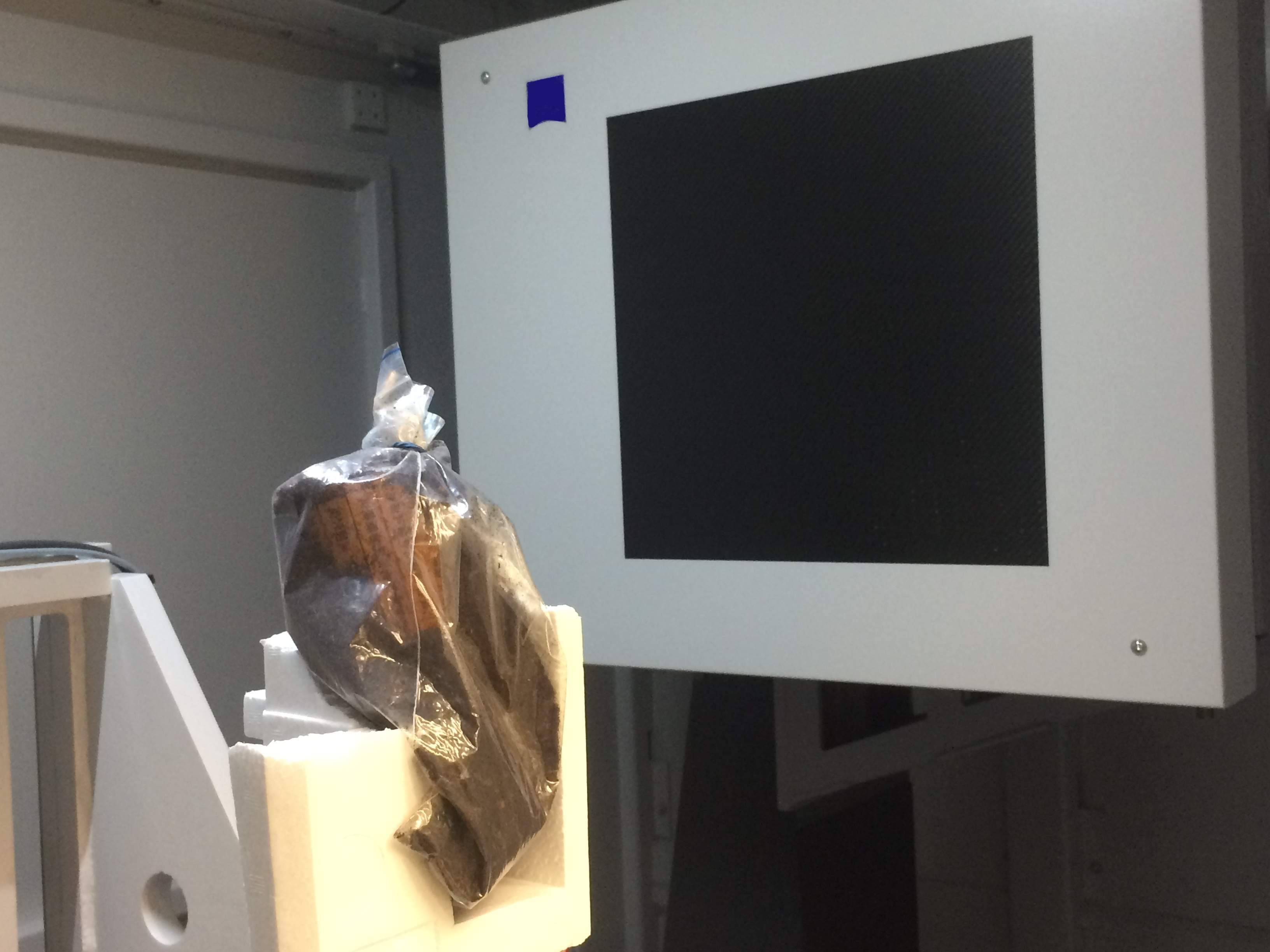
Dataset description.
Directory raw_volume_clean:
Volume of the clean scroll scan. Information on the volume is included the respective .txt file.
Directory raw_volume_soiled:
Volume of the soiled scroll scan. Information on the volume is included the respective .txt file.
Directory segmented_ct_clips_clean:
Manually segmented cropped slip volumes from the clean scroll scan ordered ascending (1: mostleft, 32: mostright slip). stitched_2D_result.tif includes the surface sampled 2-D slips stitched together to the complete scrolls.
Directory segmented_ct_clips_soiled:
Manually segmented cropped slip volumes from the clean scroll scan ordered descending (1: mostleft, 32: mostright slip). stitched_2D_result.tif includes the surface sampled 2-D slips stitched together to the complete scrolls.


 +49-9131-85-27775
+49-9131-85-27775
 +49-9131-85-27270
+49-9131-85-27270
